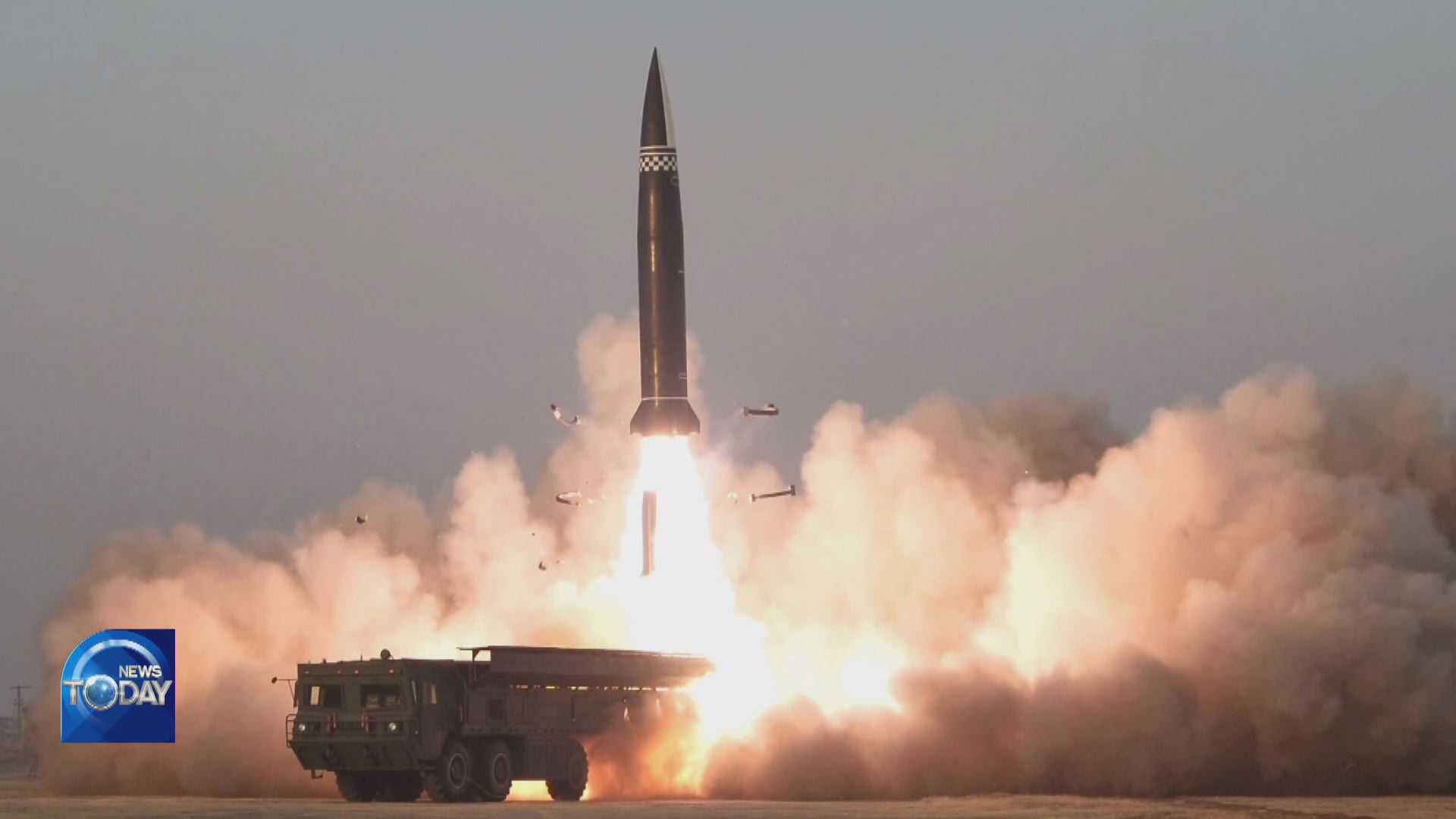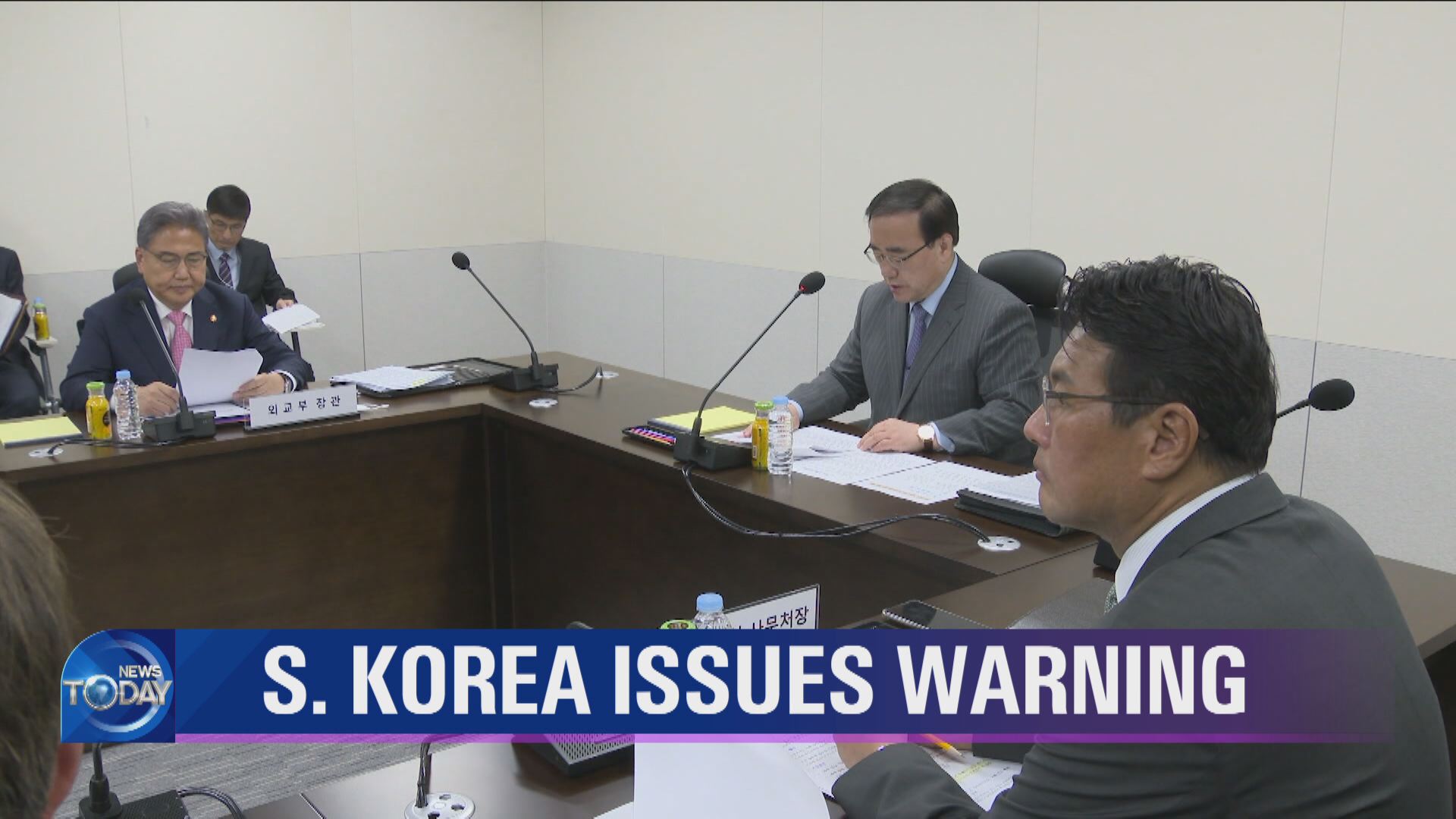N. KOREA FIRES MORE BALLISTIC MISSILES
입력 2022.10.06 (15:03)
수정 2022.10.06 (16:45)
읽어주기 기능은 크롬기반의
브라우저에서만 사용하실 수 있습니다.
[Anchor Lead]
The Joint Chiefs of Staff announced that North Korea fired this morning two short-range ballistic missiles into the East Sea. North Korea has fired its sixth missile in the past 12 days.
[Pkg]
On Thursday, the Joint Chiefs of Staff announced that North Korea fired two short-range ballistic missiles into the East Sea. They were launched at 6:01 a.m. and 6:23 a.m. from the Samsok district in Pyongyang. The first missile flew for some 350 kilometers at an altitude of roughly 80 kilometers at around Mach 5. The second one's range was about 800 kilometers, altitude 60 kilometers and speed around Mach 6. The first missile is likely to be a KN-25 ballistic missile, called a super rocket launcher by the North, and the second one a KN-23, the North Korean version of the Iskander missile. JCS chair Kim Seung-kyum convened a meeting with the U.S. immediately after the missile launches and confirmed the allies' solid joint defense posture. The South Korean military upped its surveillance and alertness on North Korea and maintained readiness for all possible contingencies. Pyongyang has fired six missiles in 12 days. That comes to one launch every two days. On October 4th, the regime fired an intermediate-range ballistic missile from the Mupyong-ri area of Jagang-do Province toward the east over northern Japan. This is the ninth ballistic missile launch since the Yoon Suk-yeol administration was inaugurated. The latest provocation appears to be in protest of the deployment of the USS Ronald Reagan in international waters near the Korean Peninsula. North Korea's foreign ministry announced through its press release early Thursday morning that the regime is closely watching how the U.S. is gravely threatening the political stability of the Korean Peninsula and surrounding regions by again mobilizing an aircraft carrier.
The Joint Chiefs of Staff announced that North Korea fired this morning two short-range ballistic missiles into the East Sea. North Korea has fired its sixth missile in the past 12 days.
[Pkg]
On Thursday, the Joint Chiefs of Staff announced that North Korea fired two short-range ballistic missiles into the East Sea. They were launched at 6:01 a.m. and 6:23 a.m. from the Samsok district in Pyongyang. The first missile flew for some 350 kilometers at an altitude of roughly 80 kilometers at around Mach 5. The second one's range was about 800 kilometers, altitude 60 kilometers and speed around Mach 6. The first missile is likely to be a KN-25 ballistic missile, called a super rocket launcher by the North, and the second one a KN-23, the North Korean version of the Iskander missile. JCS chair Kim Seung-kyum convened a meeting with the U.S. immediately after the missile launches and confirmed the allies' solid joint defense posture. The South Korean military upped its surveillance and alertness on North Korea and maintained readiness for all possible contingencies. Pyongyang has fired six missiles in 12 days. That comes to one launch every two days. On October 4th, the regime fired an intermediate-range ballistic missile from the Mupyong-ri area of Jagang-do Province toward the east over northern Japan. This is the ninth ballistic missile launch since the Yoon Suk-yeol administration was inaugurated. The latest provocation appears to be in protest of the deployment of the USS Ronald Reagan in international waters near the Korean Peninsula. North Korea's foreign ministry announced through its press release early Thursday morning that the regime is closely watching how the U.S. is gravely threatening the political stability of the Korean Peninsula and surrounding regions by again mobilizing an aircraft carrier.
■ 제보하기
▷ 카카오톡 : 'KBS제보' 검색, 채널 추가
▷ 전화 : 02-781-1234, 4444
▷ 이메일 : kbs1234@kbs.co.kr
▷ 유튜브, 네이버, 카카오에서도 KBS뉴스를 구독해주세요!
- N. KOREA FIRES MORE BALLISTIC MISSILES
-
- 입력 2022-10-06 15:03:49
- 수정2022-10-06 16:45:21

[Anchor Lead]
The Joint Chiefs of Staff announced that North Korea fired this morning two short-range ballistic missiles into the East Sea. North Korea has fired its sixth missile in the past 12 days.
[Pkg]
On Thursday, the Joint Chiefs of Staff announced that North Korea fired two short-range ballistic missiles into the East Sea. They were launched at 6:01 a.m. and 6:23 a.m. from the Samsok district in Pyongyang. The first missile flew for some 350 kilometers at an altitude of roughly 80 kilometers at around Mach 5. The second one's range was about 800 kilometers, altitude 60 kilometers and speed around Mach 6. The first missile is likely to be a KN-25 ballistic missile, called a super rocket launcher by the North, and the second one a KN-23, the North Korean version of the Iskander missile. JCS chair Kim Seung-kyum convened a meeting with the U.S. immediately after the missile launches and confirmed the allies' solid joint defense posture. The South Korean military upped its surveillance and alertness on North Korea and maintained readiness for all possible contingencies. Pyongyang has fired six missiles in 12 days. That comes to one launch every two days. On October 4th, the regime fired an intermediate-range ballistic missile from the Mupyong-ri area of Jagang-do Province toward the east over northern Japan. This is the ninth ballistic missile launch since the Yoon Suk-yeol administration was inaugurated. The latest provocation appears to be in protest of the deployment of the USS Ronald Reagan in international waters near the Korean Peninsula. North Korea's foreign ministry announced through its press release early Thursday morning that the regime is closely watching how the U.S. is gravely threatening the political stability of the Korean Peninsula and surrounding regions by again mobilizing an aircraft carrier.
The Joint Chiefs of Staff announced that North Korea fired this morning two short-range ballistic missiles into the East Sea. North Korea has fired its sixth missile in the past 12 days.
[Pkg]
On Thursday, the Joint Chiefs of Staff announced that North Korea fired two short-range ballistic missiles into the East Sea. They were launched at 6:01 a.m. and 6:23 a.m. from the Samsok district in Pyongyang. The first missile flew for some 350 kilometers at an altitude of roughly 80 kilometers at around Mach 5. The second one's range was about 800 kilometers, altitude 60 kilometers and speed around Mach 6. The first missile is likely to be a KN-25 ballistic missile, called a super rocket launcher by the North, and the second one a KN-23, the North Korean version of the Iskander missile. JCS chair Kim Seung-kyum convened a meeting with the U.S. immediately after the missile launches and confirmed the allies' solid joint defense posture. The South Korean military upped its surveillance and alertness on North Korea and maintained readiness for all possible contingencies. Pyongyang has fired six missiles in 12 days. That comes to one launch every two days. On October 4th, the regime fired an intermediate-range ballistic missile from the Mupyong-ri area of Jagang-do Province toward the east over northern Japan. This is the ninth ballistic missile launch since the Yoon Suk-yeol administration was inaugurated. The latest provocation appears to be in protest of the deployment of the USS Ronald Reagan in international waters near the Korean Peninsula. North Korea's foreign ministry announced through its press release early Thursday morning that the regime is closely watching how the U.S. is gravely threatening the political stability of the Korean Peninsula and surrounding regions by again mobilizing an aircraft carrier.
이 기사가 좋으셨다면
-
좋아요
0
-
응원해요
0
-
후속 원해요
0










![[HEADLINE]](https://news.kbs.co.kr/data/news/title_image/newsmp4/news_today/2022/10/06/10_5572694.jpeg)

![[속보] 상법 개정안, 여야 합의로 국회 본회의 통과](/data/layer/904/2025/07/20250703_831hGu.jpg)
![[속보] 국회, 김민석 총리 임명동의안 가결…국민의힘 표결 불참](/data/layer/904/2025/07/20250703_UCvuiM.png)



이 기사에 대한 의견을 남겨주세요.